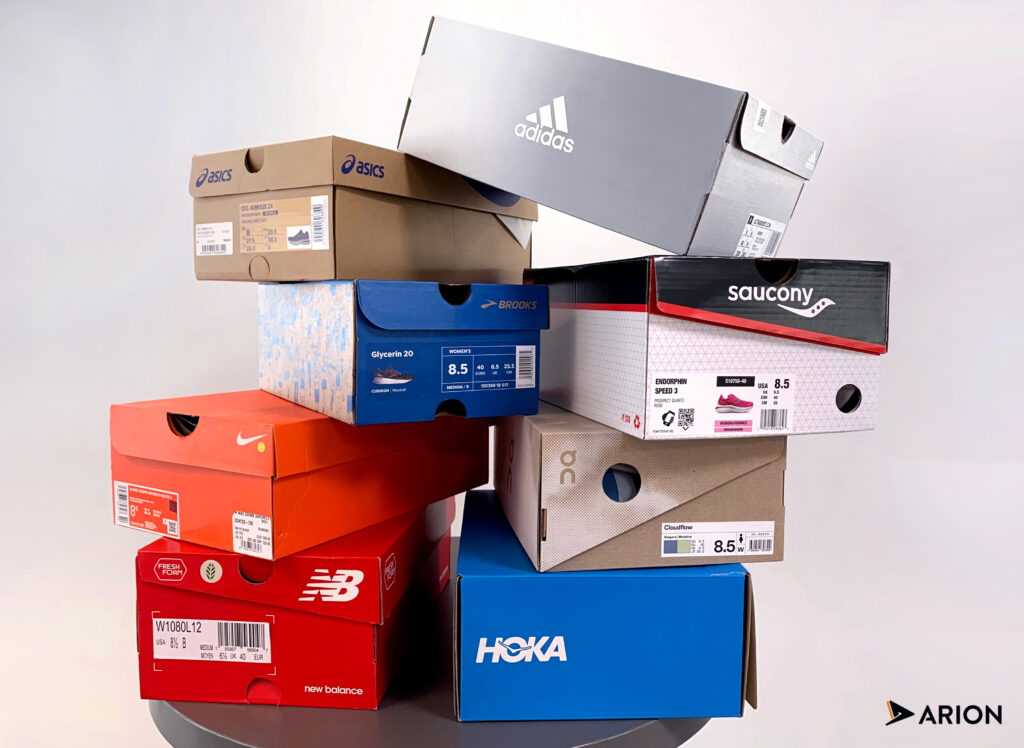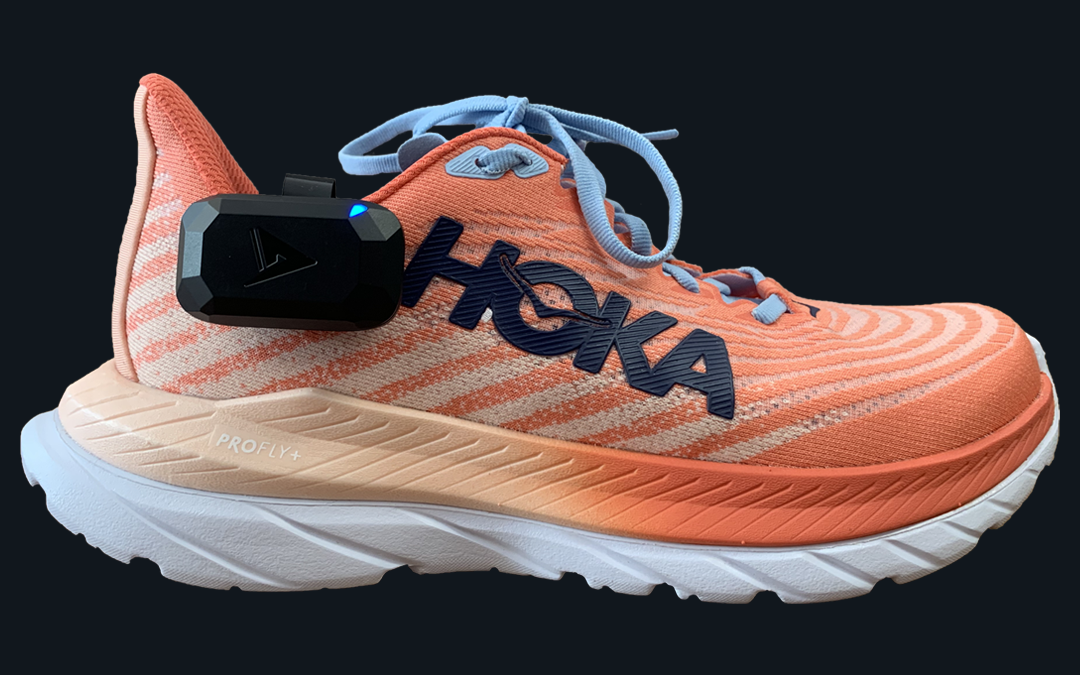At ARION we are on a mission to decode human movement. After a decade of research, six years of operation, and thousands of hours of recorded movement data, one thing has become very clear to us. Movement is exceptionally unique.
We all have diverse bodies, varied techniques, unique philosophies and personal goals. All of these elements heavily influence the way we move. Each contributing to our individual biomechanical profile, is what we call, your unique running identity.
To explore this, in this content series we will highlight that there is no such thing as the perfect running shoes. It all depends on your own completely unique biomechanics and your individual goals. We will be testing eight of the latest and greatest running shoes. Utilising our groundbreaking technology shows how one shoe can have two very drastic results on two very seemingly similar people.

We don’t review the shoes based on their general performance. We simply highlight the diverse results generated across different people. Each month we will put a new pair of shoes to the test before finally reviewing it all together with a final summary of our movement experiment.
As always, it’s the same conditions (treadmill), same shoe, same size, same pace, same distance, very different results! First up is the Hoka Mach 5…
HOKA Mach 5

The HOKA Mach 5 is a neutral running shoe with a heel-to-toe drop of 5mm. HOKA has made the shoe very responsive by adding their PROFLY+ construction midsole that is tuned for an energized run. The upper is made out of engineered mesh. The shoe itself is lightweight as HOKA made some changes towards the Mach 4, in the upper and the foam to slightly decrease the weight without reducing the benefits of the shoe.
1. The Runners
Let’s introduce our runners. Runner 1 is Manouk. She runs around once every two weeks for a longer run, and every week a couple of short runs to conduct research for ARION. Her preferred distance is around 5k with a pace between 5:15 and 5:30 min/km. A future goal for Manouk is to finish a quarter triathlon. She likes to run because she wants to stay in shape and doesn’t have time to take part in other sports.
Our second runner, runner 2 is Elzemieke. She runs around three times a week for long runs. Her preferred distance is around 5k with a pace between 6:30 and 6:50 min/km. A short-term goal for Elzemieke is to run a 5k race during the Eindhoven Marathon. Elzemieke likes to run because it clears her mind and to stay in shape.
For both runners, we will compare the HOKA Mach 5 to a baseline shoe. This baseline shoe will be an average of how both runners run. For both runners, the baseline shoe is a neutral running shoe with a lower drop. With this shoe, Manouk is a forefoot lander and Elzemieke is a rearfoot lander. Manouk is neutrally balanced whereas Elzemieke is a little bit more balanced towards her left foot. Both runners have an average cadence for a recreational runner and a nice stability profile where she variates the foot placement whilst landing.
2. The results

3. The Insights
When listening to a shoe manufacturer, you would expect a shoe to have a certain effect on all runners. For example, experiencing fewer injuries or running more efficiently. Looking at the results, it is probably not that generic. A pair of shoes can make one runner run more efficiently, while it can decrease efficiency in another. Let’s have a look at such a difference.
Footstrike Y and bioload
When looking at Footstrike Y, we see that there is a minimal difference between the HOKA and the baseline shoe for Manouk. The same applies to Elzemieke, there is almost no difference. Manouk is still a forefoot lander and Elzemieke is still a rearfoot lander. The fact that there is no difference can be derived from the lower drop that the HOKA shoe has. A low drop doesn’t influence the footstrike Y compared to the baseline shoe. This means that for the bioload, which is influenced by footstrike Y amongst others, there are also little to no changes between the baseline shoe and both runners. There is still a difference between Elzemieke and Manouk, where Manouk has more biomechanical loading on her calves and feet whereas Elzemieke experiences more biomechanical loading on her lower back, upper legs and knees. These biomechanical loading profiles are typical for both runners and their running styles. A forefoot lander like Manouk is more likely to use experience loading in their calves and feet whereas a rearfoot lander is more likely to use their lower back, upper legs and knees.
Flight time/Contact Time (FT/CT)
The ratio of flight time (time your feet spend in the air) and contact time (time your feet spend on the ground) is interesting to look at when analysing a shoe. Whilst there are several factors that can influence running efficiency, shorter contact times at the same running speed have been associated with higher efficiency in several research studies. With a more reactive running style, we would also expect shorter time on the ground and more time in the air which translates to a higher FT/CT ratio. Manouk’s FT/CT ratio is not heavily affected by the HOKA shoe compared to the baseline shoe and stays relatively stable. On the contrary, Elzemieke’s FT/CT ratio increased, which means that Elzemieke spends less time on the ground and more time in the air, suggesting she has a more reactive running style and, potentially higher efficiency when running on the HOKA.

Stack height
The HOKA Mach 5 has a high stack height. From the analysis, we can see that the stack height influences the running technique of both Manouk and Elzemieke. Both runners experience longer step lengths compared to their baseline shoes. This may be explained by the stack height, adding length to the legs of both runners, and helping to increase step length.
Movement is unique.
If we combine the findings, we can conclude that, whilst the HOKA Mach 5 had little influence on Manouk and her running style, it rather positively influenced Elzemieke’s results suggesting this shoe would be a better choice for her. Elzemieke’s footstrike wasn’t greatly affected whilst both her FT/CT ratio and step length increased. These key takeaways, combined with other lead indicators, show that Elzemieke ran more reactively and potentially more efficiently in the HOKA Mach 5 when compared to the baseline shoe.
For Manouk, her footstrike remained as a forefoot lander and her FT/CT ratio was not heavily affected, but her step length did increase. Despite both being female 5k runners of similar age, the HOKA Mach 5 appeared to bring less benefit to Manouk compared to the baseline shoe, than it did for Elzemieke.
The unique combination of your personal running characteristics and the available shoe technologies is the reason why at ARION, we focus on your unique running identity, combining your individual biomechanics with specific shoe technologies that bring you the biggest possible benefits. Stay tuned as we continue to test another pair of the latest and greatest running shoes every two weeks and start to explore some comparisons between the different shoes that we test.
If you want to discover your running identity visit your nearest HUB in one of our ARIONHUB stores to learn more.

